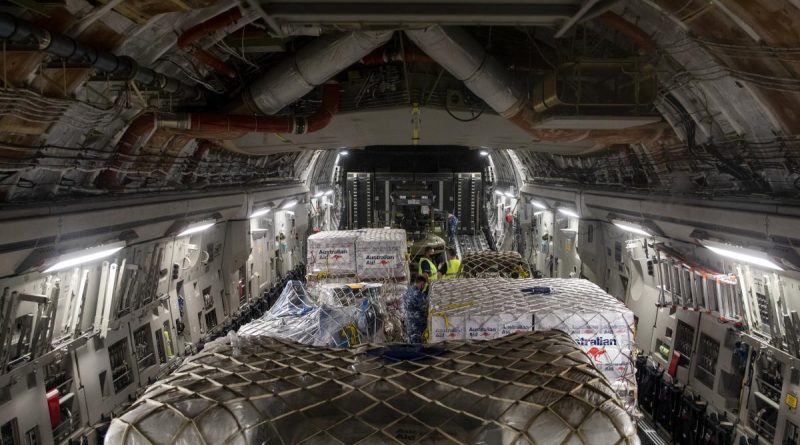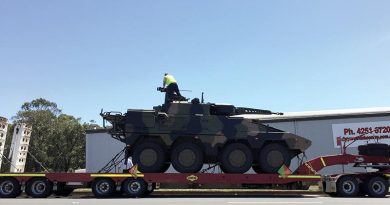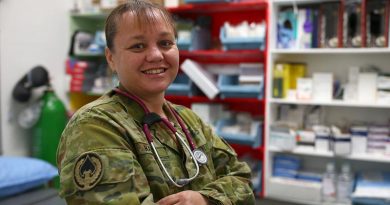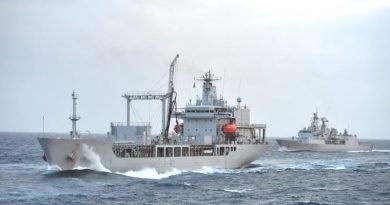Relief flights arrive in Tonga

A Royal Australian Air Force C-17A Globemaster III has delivered urgently needed relief to Tonga following a volcanic eruption and tsunami in the South Pacific nation.
CAPTION: Pallets of humanitarian assistance and engineering equipment bound for Tonga, are loaded onto a RAAF C-17A Globemaster III, at RAAF Base Amberley. Story by Eamon Hamilton. Photo by Leading Aircraftwoman Emma Schwenke.
The aircraft made the 3300-kilometre flight from RAAF Base Amberley to Fuaʻamotu International Airport on January 20 as part of Operation Tonga Assist 22.
Tongan Armed Forces personnel worked tirelessly for days to clear the thick layer of ash that coated the airport’s main runway following the volcanic eruption on January 15. Delivery of assistance to Tonga commenced as soon as the runway was declared open.
The C-17A delivered seven pallets of humanitarian supplies provided by the Department of Foreign Affairs and Trade, along with a forklift and runway sweeper.
The Air Force has also provided dedicated surveillance aircraft with specialist personnel on board to conduct aerial assessments of airfields and potential airdrop zones.
Wing Commander Dean Bolton, Commanding Officer of No. 36 Squadron, said the relief missions to Tonga were unique for Air Force.
“Our crews are well accustomed to delivering aid where it’s needed, but the presence of volcanic ash complicated our response,” Wing Commander Bolton said.
“We’re grateful for the effort and labour of work crews in Tonga who cleared the runway at Fuaʻamotu International Airport of ash, with much of that effort being done by hand.”

CAPTION: RAAF Pilots Wing Commander Dean Bolton and Flight Lieutenant Alice McCabe, in the cockpit of a C-17A Globemaster III, as they prepare to land at Fua’amotu International Airport, Tonga. Photo by Leading Aircraftwoman Emma Schwenke.
Further flights from Australia and New Zealand are planned in coming days, with the delivery of assistance being carefully managed with airport authorities and the Government of Tonga.
“One of the challenges is coordinating aircraft arrivals so that we’re not all trying to land and unload relief supplies at the same time,” Wing Commander Bolton said.
“Coordinating our arrivals allows us to manage several important factors, including ensuring there is no COVID transmission risk between flight crews, the capacity to receive and distribute cargo, and the available aircraft parking spaces.
“We have a strong working relationship with the New Zealand Defence Force, and sharing information about the situation on the ground in Tonga will allow us to expedite the delivery of relief.”
Strict measures were also undertaken to address COVID-19 requirements.
“All crew and passengers on board were required to have a negative result on a COVID test before boarding,” Wing Commander Bolton said.
“We made sure all engagement between C-17A crew and staff at the airport was contactless to avoid any chance of COVID transmission.”
The mission to Tonga is not the first for No. 36 Squadron C-17A crews.
“Previously we supported the Tongan community in 2018, delivering relief stores and emergency response personnel in the wake of Tropical Cyclone Gita,” Wing Commander Bolton said.
“No. 36 Squadron is proud to be able to support the Tongan community during challenging times like these, and we are ready to support our Pacific family, whenever help is needed.”
.
.

.
.





